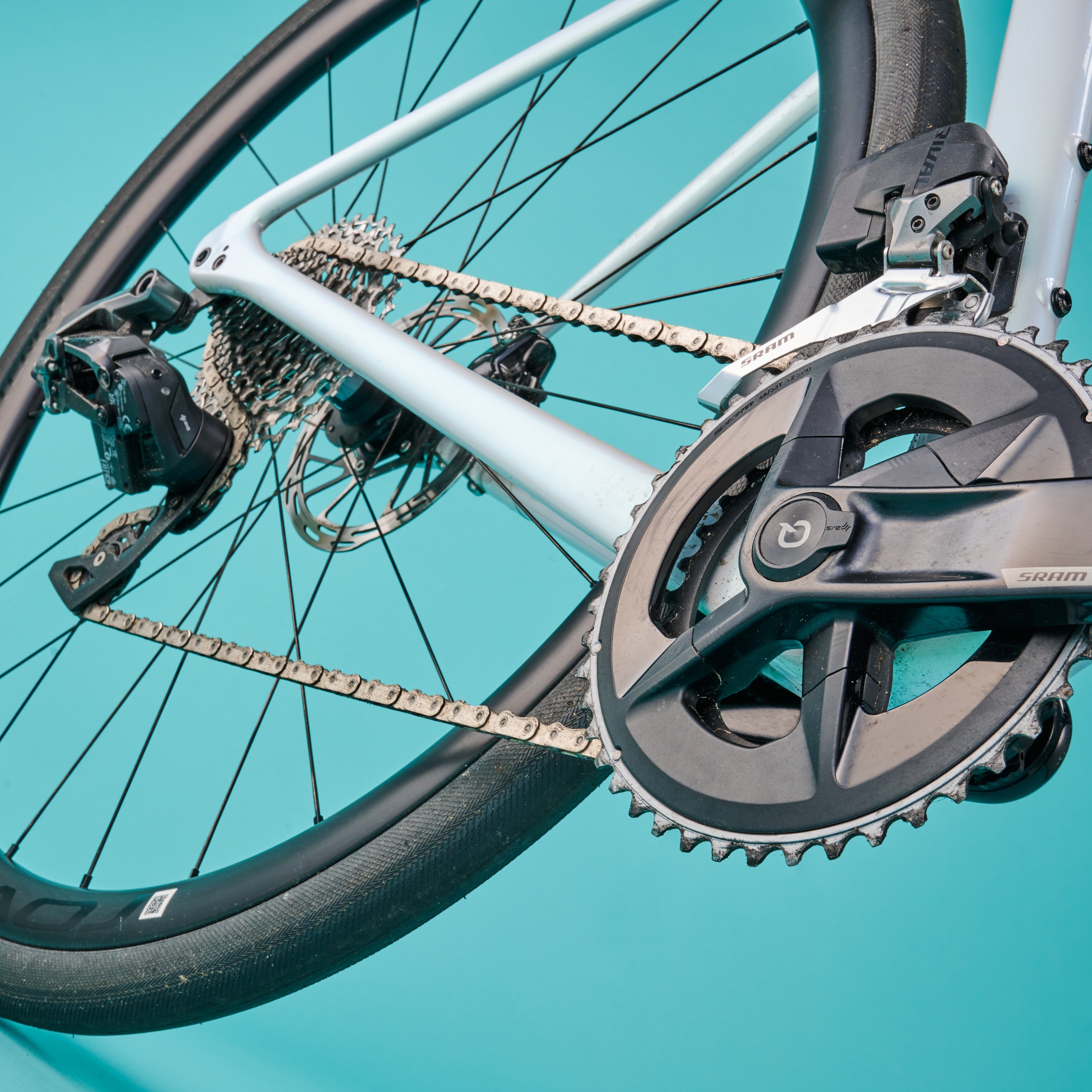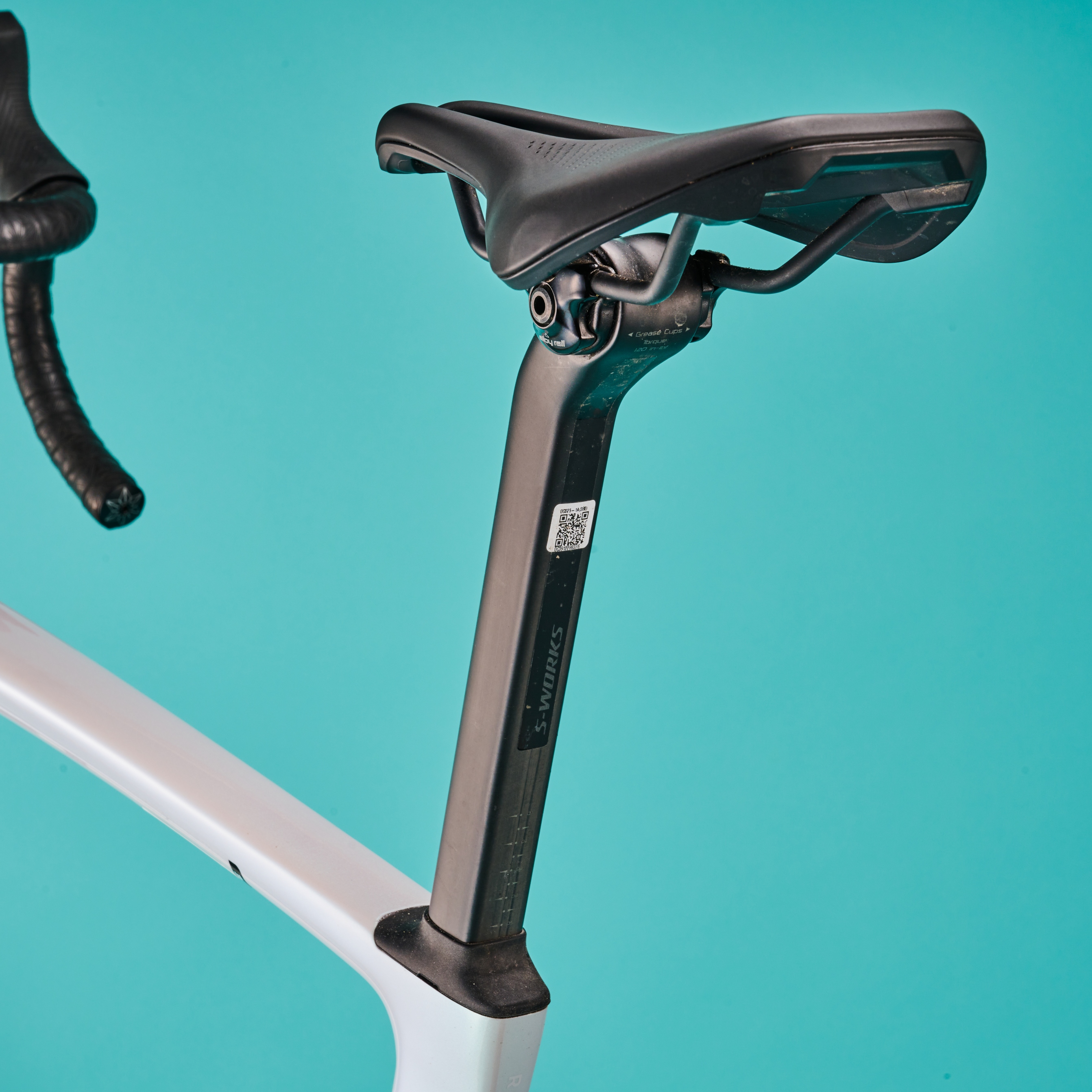Review: Specialized Roubaix SL8 Expert, built for long, epic days in the saddle
We put the latest version of Specialized's enduring pothole tamer through its paces

This bike may have been forged on the pavé of northern Europe, but it is ideally suited to Brits and anyone else whose local roads seem determined to revert to gravel as fast as possible. Its ability to iron out rough surfaces makes it perfect for long distances, reducing fatigue thanks to its suspension and super-useable SRAM eTap gearing. It has been made even more capable for 2024, with big clearances that make the odd dabble with gravel a realistic option for the first time.
-
+
Game-changing ride over rough roads
-
+
Confidence inspiring cornering
-
-
Suspension bob on hills
-
-
Finicky seatpost adjustment
You can trust Cycling Weekly.

The Specialized Roubaix has a lengthy heritage stretching back to 2003 and its first launch. 'Endurance road' is how Spesh describes the bike, and even back then it featured elastomer damping in the seat stays for added compliance. But this latest bike is a far cry from that original model in nearly every way bar the idea behind it.
Launched September 2023, the bike tested here is the 2024 machine, which features some subtle – and not-so-subtle – tweaks over the outgoing model. They all point in the direction of more versatility, more capability.
A major increase in tyre clearances to gravel proportions is one of the headline changes, while the wheelbase has also been extended by around 10mm to accommodate the bigger rubber.
It's still very much a road bike though, made for long days in the saddle. Let's meet it.
Frame and finishing kit

The frame is built from FACT 10r carbon, with clearance for 40mm tyres
The 'heart of the bike' metaphor is one that is well used when it comes to the frame, but in this case it could hardly be more apt. The Roubaix's frame has changed a lot over the years, but it has always been the key to unlocking the bike's potential.
An unrivalled ability to soak up the rough and tumble of poor road surfaces is the USP here, and a large part of the Roubaix's ability to do this is thanks to the Future Shock 3.0 suspension, housed in the stem and the head tube.
Unlike a suspension fork, the system is both discreet and light, although there's far less bounce on offer, with the Future Shock providing only 20mm. To look at the bike, you wouldn't notice the difference at a glance – the only giveaway on our test machine was the rubber boot between the stem and head tube.
The latest race content, interviews, features, reviews and expert buying guides, direct to your inbox!
This Expert bike is fitted with the Future Shock 3.2, which has no on-the-fly adjustment but is hydraulically damped and can be readily made firmer using different springs and preload washers.
At the rear, there's no suspension as such and the Zertz inserts of old are long gone; instead, the compact frame and 'dropped clamp' setup are designed to expose as much of the Specialized Pavé seat post as possible, with the carbon post tuned to control the compliance. Meanwhile, the rear triangle is stiff, Spesh says, to retain efficiency.
The seat clamp is an expander bolt hidden in the frame. It's not attached to anything and we lost it down the seat tube more than once (no problem, it just falls back out). It's not terribly awkward but it certainly isn't as straightforward as a standard clamp.
The 950g (claimed) frame is built from FACT 10r carbon, which uses aero tubes from the company's Free Foil Shape Library. Our test bike was finished off in a subtle 'gloss dove grey'. It is, perhaps, a bit too subtle – you could argue that this much bike deserves a colour to match. But then there are good reasons to blend in, in this age of bike-jackings.
The wheelbase is a touch longer than the previous machine, but the clearances are the headline change, with space for 40mm tyres, up from 33mm.
This is all topped off with items from Specialized's respected line of in-house components, with an alloy Future Stem Pro and Body Geometry handlebars that feature a small rise, which seems superfluous to me.
Components

SRAM Rival 12-speed eTap AXS, with 46t/33t up front and a 10-36t cassette in the rear. Note the inbuilt power meter.
All too often it feels like you pay through the nose for a premium bike, only to be fobbed off with a wheelset that seems like an afterthought – or a cost saving at the very least. Not so here. The Roval Terra C carbon hoops aren't going to have you searching your garage for something better, or going back to the bank for a top-up on that 'home improvement' loan in order that you can replace them. The 25mm internal width makes them ideal for the task at hand, and the 32mm carbon rim depth is a happy compromise between speed and practicality. Twenty-four spokes join each rim with DT Swiss hubs.
The tyres are provided by Specialized, and its 32mm Mondo 2BR – that's '2Bliss Ready', meaning 'tubeless ready', to me and you. It's very much road going rubber, with a file tread, though it's wide enough and sturdy enough for the occasional straightforward non-paved foray.
As you'd expect on a £6,000 machine, you are not required to provide much in the way of physical effort when it comes to changing gear – it's electronic. SRAM Rival 12-speed eTap AXS, more precisely. For those unfamiliar, this is all wireless, with each component housing a battery (or two), and a single button on each shift lever – the right-hand changes down the block, the left-hand up, while both together swap the chainrings. These are, of course, paired with Rival hydraulic discs.
You might have expected Force at this price, but more than making up for that is SRAM's inbuilt chainset power meter, which, in theory, means you can claim back a nice little chunk of the spend on this bike by selling whichever model you already own – if you own one already, of course.
Chainring size is a very useable 46/33 teeth, while the spread at the back is equally handy – 10-36t.
The Ride

Future Shock 3.2 suspension positioned above the head tube made light of Surrey potholes and French gravel
Specialized-sponsored rider Peter Sagan says on the company's website, that with the Future Shock, you can't even tell you're riding on pavé. You don't need me to tell you that such comments are, let's say, steeped in poetic licence, but that's not to say that it isn't worth having. It really is, extra 200g and all.
The busted-up roads of Surrey formed much of the test bed – as well as the white roads featured in stage nine of the Tour de France that threatened, for a moment, to turn the race on its head this year. And having the misfortune of being oh-so-familiar with the ruts, scars and holes of the former, I could really feel the difference. The bike doesn't exactly float, but it does take the sting out of the rough surfaces. The seatpost and the Future Shock work well as a system – what Specialized calls Suspend The Rider (STR) – though it's probably the front end that does the most noticeable job.
In particular, I loved descending on this bike, where the suspension really plants it in corners, with extra confidence coming from the smooth ride and wide rubber.
On our test bike set-up I did find the mostly helpful Future Shock spilled over into unhelpful on steep climbs when, out of the saddle and at low revs, the considerable weight of yours truly managed to induce a bounce in the front end that felt like it was sapping efficiency. As mentioned already, this is easy enough to correct at home, but unless you're a 90kg+ rider, it's unlikely to be a problem you'll run into.

Carbon seat post provided compliance but James wasn't won over by the Power Expert saddle, widely regarded as one of the comfiest available
Adding to the suspension equation in a more workaday way are the tyres, of course. With 25mm rubber whacked up to 100psi, you mightn't be giving the shock a fair crack of the whip, but the 32mm Specialized Mondos are well-suited to the bike's MO.
They crack along well on tarmac, working in tandem with the suspension to remove surface buzz and sting. If you are looking to head off road often though, you'll soon find yourself reaching for something that better fills out the bike's increased clearances. The Mondos are fine, ideal even, for brief diversions onto hardpack, but on the gravel of central France, I found myself longing for something closer to the knobbly 42mm rubber that my ride partner was using to make it look effortless.
It feels like gears and brakes at the higher end of the market have reached a bit of a cul-de-sac in terms of performance improvement, and all there is left to do is add bells, whistles, and yet another sprocket. Thus, as you might expect the SRAM Rival kit fitted to the Roubaix was hard to fault. Gear changes were quick, accurate and smooth, while the hydraulic discs offered confidence-inspiring stopping power.
One thing I didn't particularly care for was the Specialized Power Expert saddle, which seemed to be some kind of long-lost relative of the disembowelling cutlass of old. But these things are subjective.
Verdict

Not cheap, but the Roubaix SL8 Expert offers a lot for your money
That saddle aside, I loved this bike. It was an utter joy to ride. For anyone fond of long days on the road – especially if that road has fallen into rack and ruin thanks to decades of neglect, the Roubaix is perfect. It's not a road racing bike – unless that road race is, perhaps, Paris-Roubaix; and it's not really a gravel bike in standard guise – change the tyres though, and it could be. Add a flared handlebar too, which is something I think it would benefit from anyway.
The Future Shock and the Pave seatpost are without doubt worth having, though you may find you need to spend a little time tuning the former to suit your needs.
It's not cheap, but there is so much here, offering the potential to change your rides and your riding for the better.
Spec
Price: $6,500 / £6,000
Frame: FACT 10r carbon, British BB threaded, 142x12mm thru-axle
Fork: Carbon, Future Shock 3.2
Gears: SRAM Rival eTap AXS 12-speed
Cassette: SRAM XG 1250 10-36t
Chainset: SRAM Rival power meter 46/33t
Brakes: SRAM Rival hydraulic disc
Wheels: Roval Terra C, DT Swiss hubs
Tyres: S-Works Mondo 2BR 32mm
Bars: Specialized Hover Expert
Stem: Specialized Future Stem Pro
Saddle: Specialized Power Expert
Seatpost: S-Works Pave
Weight: 8.6kg
After cutting his teeth on local and national newspapers, James began at Cycling Weekly as a sub-editor in 2000 when the current office was literally all fields.
Eventually becoming chief sub-editor, in 2016 he switched to the job of full-time writer, and covers news, racing and features.
He has worked at a variety of races, from the Classics to the Giro d'Italia – and this year will be his seventh Tour de France.
A lifelong cyclist and cycling fan, James's racing days (and most of his fitness) are now behind him. But he still rides regularly, both on the road and on the gravelly stuff.
